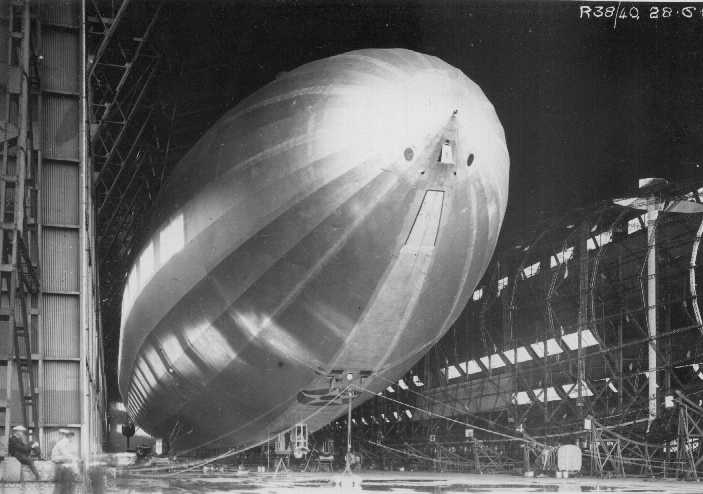William Oliver is not buried in the cemetery, but his death, in the airship R 38, on August 24, 1921, was recorded on the headstone of plot B2 62 (Anglican) .
R38 Airship
The R 38 was an early prototype of airship, the most famous of which was the R101. It was based at Howden Aerodrome in Yorkshire and, when the tragedy happened, was on a test flight before being flown to America. Among the 51 crew on board were a number of Americans. As it flew over Hull just before 6 o’clock on Wednesday 24th August 1921, two explosions shook the town, and at first the R38 seemed to dive straight towards the crowds in the streets. Fortunately the commander managed to divert the burning airship away from the buildings , and it fell into the Humber in two pieces, part of it on a sandbank. There were 5 survivors who escaped by parachute, three bodies were recovered and 43 people were missing.
Among the missing
William Oliver was among the missing. His duties lay in the ‘petrol department’. He had joined the Royal Flying Corps (later the RAF) in 1915 and had served in France during the First World War, achieving the rank of Leading Aircraftman. After the war he elected to stay in the RAF and was appointed to work on the R38. He and his parents and eight siblings grew up at 32 Steade Road but William lived at 160 Shirebrook Road. He was 29 years old and left a wife and three children.
The above is reprinted from an article by Joan Flett, originally published in Undertakings, the Sheffield General Cemetery Trust newsletter.




